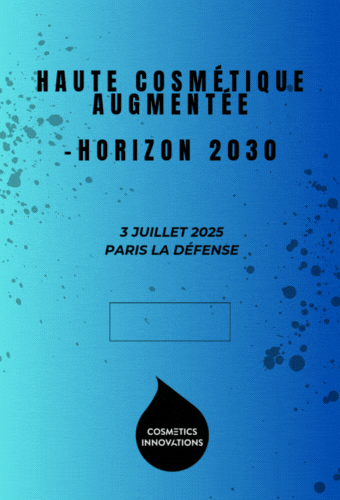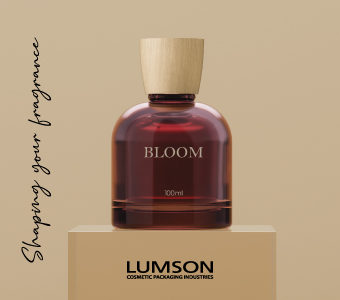L’Occitane is currently preparing the implementation of a system to help measure and reduce the environmental impact of its products, and participates inthe French experimentation of the environmental information for consumer goods. Explanations from Philippe de Brugière, CSR Director, Packaging Forecasting and International Production Development.

Premium Beauty News - Environment is not strictly speaking a novelty for L’Occitane!
Philippe de Brugière - Of course not! It’s part of its "genetic heritage". Because, right from the outset when the company was created in 1976, at the instigation of its founder, Olivier Baussan, who was very concerned about the future of the planet, he decided to use only recyclable materials.
In 2007, a new impetus was given to this approach with the will to organise a real eco-design approach, led by the Packaging Development but not limited to this question as it deals also with ingredients and formulas.
And concerning printed packaging, we favour plain eco-designed packs, sourced from FSC paper (Forest Stewardship Council). We prefer using water-based inks and chose suppliers responding to the "Imprim’ Vert" label. We have decided to use as little as possible such finishing techniques as vacuum metallization or hot stamping and to design separable packaging (pumps and screw caps) to make our products end of life sorting easier.
All this resulted in a "Guideline manual on eco-design" which very methodically presents different materials and components.
Actually, there are three decision levels: a first level of concrete and systematically implementable decisions, a second level of approved decisions but which are not applicable to all processes and all materials (e.g., water-soluble lacquering), and finally a third-level concerning options which have not yet been industrially validated and the process of which has not been fully quantified, but that we are nonetheless committed to develop.
Logically, this led internally to the creation and implementation of a qualitative eco-design grid for each product with about fourteen criteria representing all the questions that must be considered for a packaging product in the prospect of a new eco-designed development.
We have also launched, a process to measure the environmental impact of all our current products using the Life Cycle Analysis method (LCA), which is entirely supervised by an engineer specialized in this field and who took office in 2009. This will be in fact the method on which we will build the product’s environmental information intended for consumers, a multi criteria information but not only focusing on C02 emissions. Eco-design must also be considered as a continuous improvement principle.
Premium Beauty News - Concretely, what did it lead to?
Philippe de Brugière - This year again we have undertaken actions for improving our sustainable development process through the development of eco-refills, reusable bottles, recycled bottles, by changing snapped-on caps with screwable caps to simplify the sorting.
Our approach to measure the environmental impact gives us the opportunity to question ourselves on all the relevant questions concerning eco-design (recyclability, choice of the raw material, environmental impact...) during project launches: by reducing the weight of our sample sachets, by integrating the code of ethics to specifications for suppliers which was signed by 100% of our sub-contractors and more than 96% of our suppliers, by providing consumers with the appropriate information on how to sort out our packaging.
We have decided to use new materials such as recycled PET (100% recycled plastic) for some of our upcoming launches. In the new Verdon range launched in 2010, plastic and glass bottles are 100% post-consumer recycled, that is to say they come from the recycling of consumer products for the further effective realisation of the "cradle to cradle" concept. We have developed more eco-refills. And we seek to provide the guarantee of an ethically irreproachable sourcing in Asia (on some of our components or accessories, for example).
Premium Beauty News - You are also using a LCA software for checking the packaging!
Philippe de Brugière - That’s right. And believe me, it is a path strewn with surprises. Let me give you an example: to make 1 kg of glass, 0.84 kg of CO2 are released. To make 1 kg of PET, 2 kg of CO² are released. On the face of it, glass is the winner.
Well, in the case of a 250 ml glass bottle compared to an identical PET bottle, it’s the other way around. PET is the winner! Because a 250 ml glass bottle weighs approximately 200 gr. And the same bottle in PET, only 30 gr. Do the math on it and you will see that glass is almost 3 times more impacting in C02.
But be careful and don’t forget that glass is infinitely recyclable, while PET is not...
Premium Beauty News - What goals have you set yourselves with?
Philippe de Brugière - They are ambitious! Zero landfill waste, the least possible consumption in energy, water, non-renewable materials and maximization of the sorting and recycling. We also want to facilitate the reuse of packaging by consumers.
Our approach integrates the end consumer. We must help him improve his sorting so that he throws as little as possible. It is useless to buy so called "virtuous" materials and to not feel concerned afterwards about how the final consumer will deal with the product we sold him.
Premium Beauty News - Your in-house training program on eco-design was a big success!
Philippe de Brugière - If we actually had no doubts about that, it’s true that it exceeded our expectations! All the people were volunteers. Following the training, we had to face internally, an explosion in requests to conduct impact measurements.
Because today, in the development and validation process of new products, the appraisal intends to be irreproachable and honest. And sometimes it may occur that a whole range of products be rejected by the General Management if they do not successfully pass environmental criteria.




































